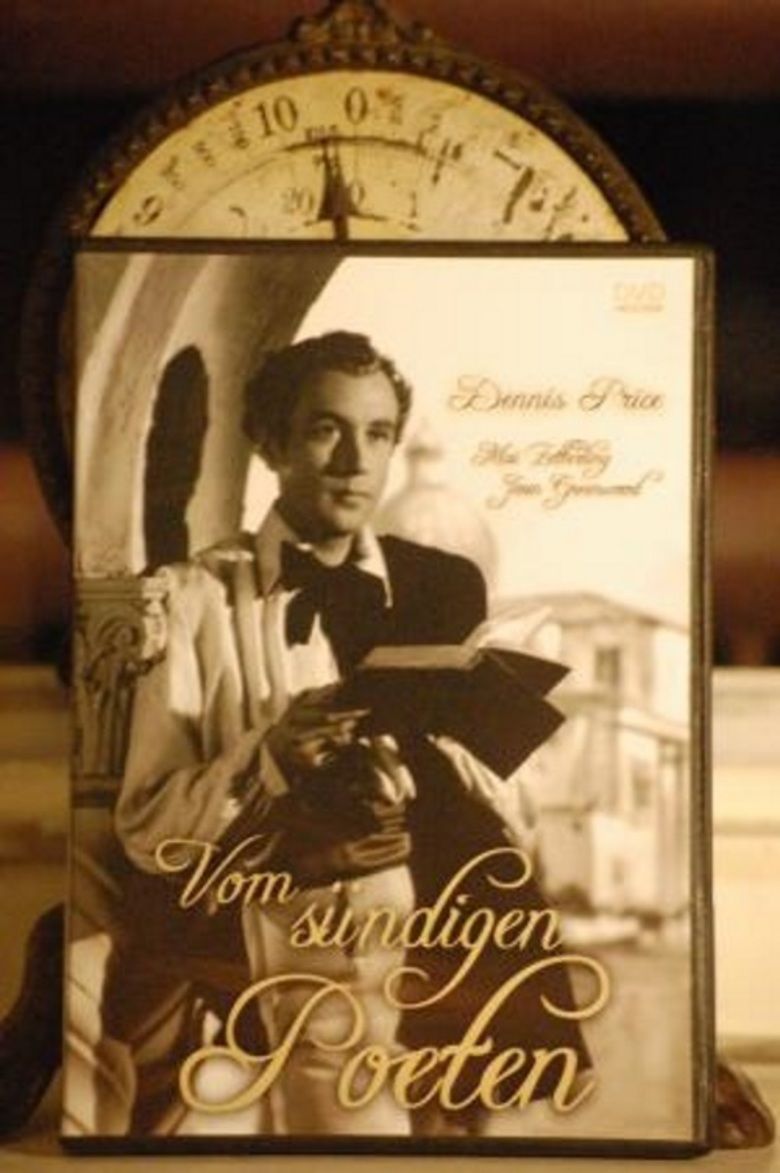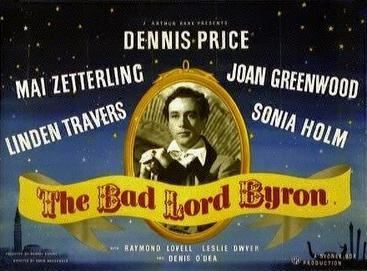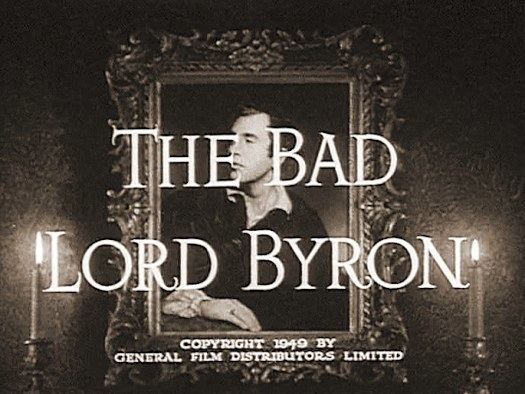The Bad Lord Byron
5.4 /10 1 Votes
Genres Drama, Biographical film Country United Kingdom | 5.2/10 IMDb Duration Language English | |||||||||||||||||||||||||||||||||
 | ||||||||||||||||||||||||||||||||||
Release date 1949 Similar movies Related David MacDonald movies | ||||||||||||||||||||||||||||||||||
The Bad Lord Byron is a 1949 British historical drama film centered on the life of Lord Byron. It was directed by David MacDonald and starred Dennis Price as Byron with Mai Zetterling, Linden Travers and Joan Greenwood.
Contents

Plot

The film sees life from the perspective of Lord Byron, seriously wounded in Greece where he is fighting for Greek independence. From his deathbed, Byron remembers his life and many loves, imagining that he's pleading his case before a celestial court.

The first witness called is Lady Caroline Lamb who recalls their relationship. She met Byron after a ball and they began an affair. He writes the poem She Walks in Beauty about another woman, causing Lady Caroline to stab herself with a broken glass. He breaks things off and Lady Caroline is sent to Ireland.
The next witness is Annabella Milbanke who talks about her romance and marriage to Byron, including the birth of their child.
The third witness is Augusta Leigh, who Annabelle thought Byron was having an affair with, though Augusta denies it.
John Hobhouse, 1st Baron Broughton is the fourth witness. He talks about Byron's political career and how he became famous overnight through his poetry and him meeting Teresa, Contessa Guiccioli.
Teresa is the fifth witness. She talks of their love affair while she was married and his involvement in the Carbonari in Italy. Byron leaves her to go fight for Greek independence. The celestial judge (played by Dennis Price) tells the viewer it is up to them to decide whether Byron was good or bad.
Cast
Development
The film was announced in 1945 by Two Cities with Eric Portman to play the title role (Portman had played Byron on stage). Stewart Granger was mentioned as another possibility. The film was to be written, produced and directed by Terence Young based on the books by Peter Quennell, The Years of Fame and Byron in Italy.
The project was not made but was re-activated when Sydney Box took over Gainsborough Studios in 1946. Box had been considering a film based on Percy Shelley but was also enthusiastic about making one on Byron, who Box greatly admired. He assigned the project to producer Aubrey Baring and director David MacDonald. They greatly reduced Young's script by a half but Box was still dissatisfied with it.
Working with Gainsborough script adviser Paul Holt, Box reconfigured the film to consist of a series of flashbacks about episodes in Byron's life. Box ultimately decided this approach was too derivative of Citizen Kane and made Byron's presence in the film too insubstantial. He then decided to focus the script on Byron's relationship with Teresa Guiccioli but changed his mind with Mai Zetterling who was playing that part was not available.
Shooting
The lead role was given to Dennis Price, who said during shooting he felt Portman should play the role.
Location filming began in Italy in October 1947. They returned in December. It was followed by shooting in Shepherd's Bush studio. Filming was done by April.
A Nottingham City librarian refused for the filmmakers to shoot at Newstead Abbey because of Byron's reputation. Sydney Box called it "an example of bureaucracy at its worst."
Great effort and much money was spent to ensure the film was as historically accurate as possible in terms of sets and costumes. However the film was not shot in colour because that would have increased the budget of the film by a third; also colour cameras were being used on the film The Blue Lagoon. A huge set was built at Sheperds Bush.
Filming took eleven weeks.
Before the film was released, the US announced they would not allow the film to be screened in America because of the relationship between Byron and his half sister, even though that did not featured in the film.
Sydney Box later heard a radio play about Byron, The Trial of Lord Byron by Laurence Kitchin which he thought would tie up some loose ends of the film. It consisted of Byron being hauled before a celestial court and forced to justify his actions. Box bought the rights to the radio play and had David MacDonald shoot 22 minutes of retakes in two days.
Critical
The movie received bad reviews. Dannis Price later said "One day I hope to have enough money to make another Byron film — the real story. And if I could get hold of all the scenes we shot and which never appeared in the film, two-thirds of the Job would be done."
A critic for Time Out has written of the film:
Box Office
The film was a box-office disaster. In 1949 it had earned £22,400, recording a loss of £179,200.
Book
Sydney Box and Vivian Cox wrote a book on the making of the film which was published in 1949.
References
The Bad Lord Byron WikipediaThe Bad Lord Byron IMDb The Bad Lord Byron themoviedb.org
